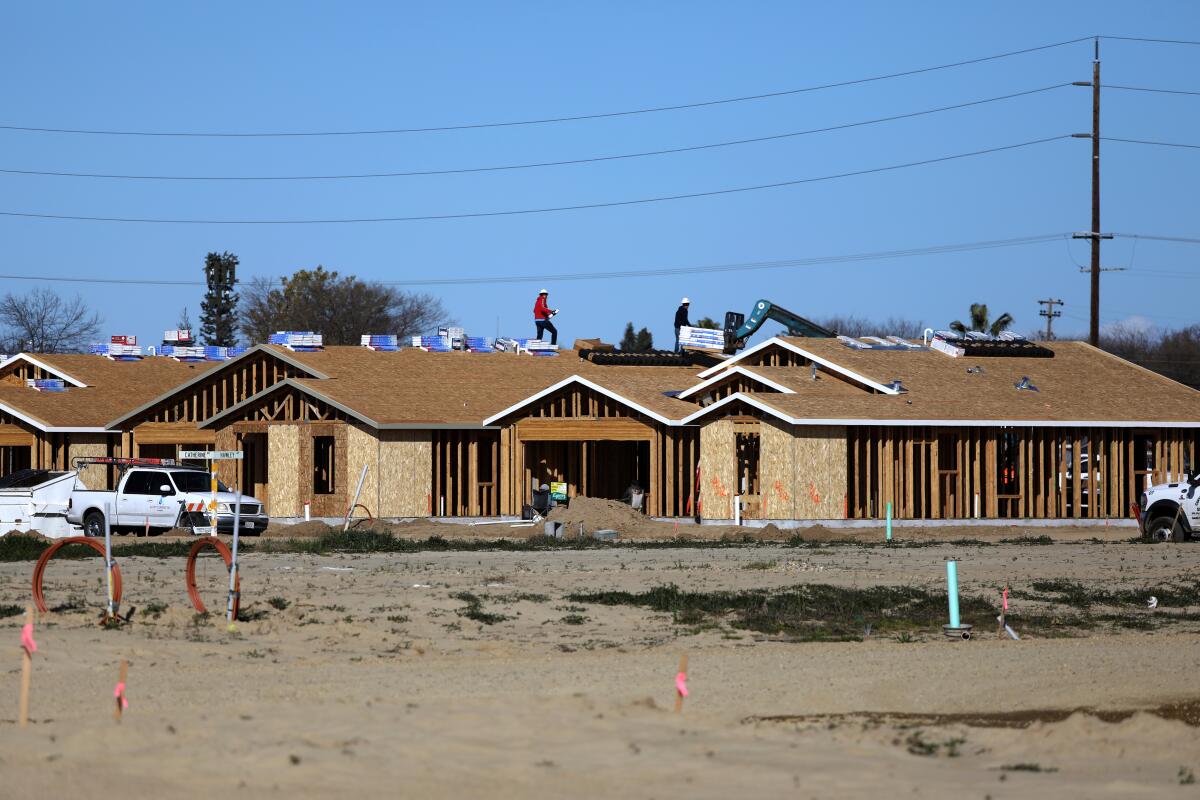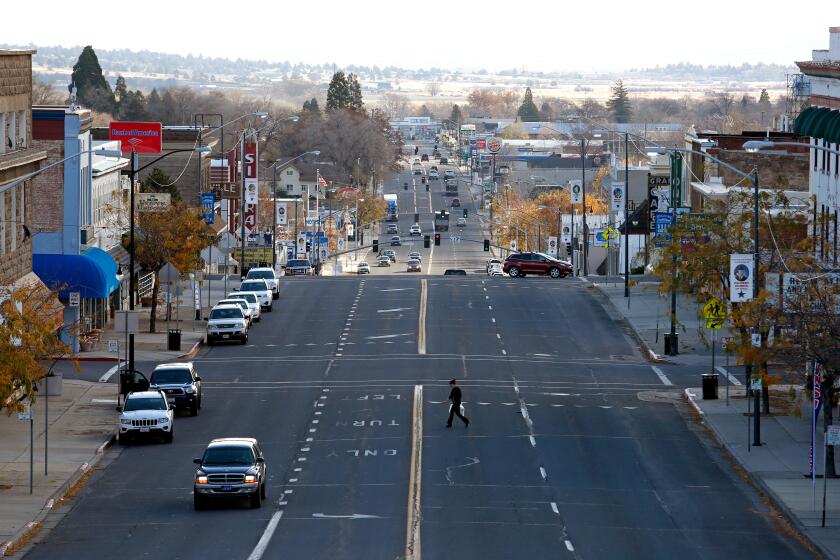Amid the population exodus, California saw housing construction boom during pandemic

- Share via
Even as California’s population took a hit during the pandemic, new data show the state experienced a boom in home building the likes of which has not been seen since the Great Recession.
The rise in new construction — including increases in multiunit dwellings in some areas — comes as California faces a housing crisis that has sparked a push at the city and state levels to build more homes.
Experts say that although the ramped-up construction has helped, it is not enough — at least yet — to seriously reduce high rents and housing prices.
The data from the California Department of Finance show statewide housing production in 2022 increased 0.85%, the highest figure since 2008. That growth could eventually help combat the high cost of housing in California, demographic experts say, and plug the population drain.
Home construction rose in 2020 and 2021 but really took off in 2022, showing the biggest jump since 2008.
Though 2008 — the year a housing-driven financial crisis plunged the United States into the Great Recession — may be an ominous comparison, lawmakers have stated that additional housing is key to solving the state’s affordability crisis, with Gov. Gavin Newsom pledging when he first entered office in 2019 that 3.5 million new homes would be built by 2025.
“When it takes a decade of really massive economic growth in this state for housing production to catch up to the prerecession levels, that says as much about the depths of our production crisis as it does about some kind of recent victory,” said Michael Lens, a professor of urban planning and public policy at UCLA.
Coronado officials have thumbed their noses at Gov. Gavin Newsom and state regulators, calling the process “central planning at its worst” and assuring residents that it will be years before the state cracks down.
Lens did point to some policy changes, including those governing accessory dwelling units, as positive steps. “Some of this is the result of smarter policy,” he said, “but it’s also a really slow rebound.”
A Times analysis of county-level data showed that between 2021 and 2022, Central and Northern California counties saw the biggest housing growth. Placer, Yuba, Butte, San Joaquin, Merced and San Benito counties led the state in growth, all above 3%.
“That’s not what we would hope,” Lens said of more rural areas adding the most housing, as Central California is “not where housing is most expensive” and “not the most economically productive area of the state.”
“The battle that we’re facing on a land-use front,” he said, is the prevalence of “overly restrictive coastal areas.”
“We still haven’t found a way to make San Francisco and the surrounding areas, and Los Angeles and its surrounding areas, build more housing more quickly,” said Lens, adding that the housing crunch has driven population loss.
Unaffordability and the pandemic have driven several years of population loss in California, a trend that continued in 2022, when the state lost around 138,400 people, a 0.35% loss. The decline was less than in the prior years, a slowdown partially attributable to skyrocketing foreign immigration.
See the ZIP Codes in California which had the most net move-ins and move-outs from 2019 to 2022. One million more people moved out of California homes than into them over the last four years.
During the pandemic, foreign immigration plummeted, but 2022 saw levels recover to near pre-pandemic rates. California had a net gain from immigration of 90,300 people last year, almost three times the total of 31,300 the year before.
The increase in immigration, however, was not enough to stop California’s three largest counties from experiencing population loss yet again.
Los Angeles County’s population declined by 73,293 people, or 0.75%, San Diego County’s by 5,680 people, or 0.2%, and Orange County’s by 14,782 people, or 0.5%, according to the state Department of Finance report.
Overall, 46 of California’s 58 counties lost population last year. Of 482 cities counted, 356 lost population, or 74%.
“Hundreds of thousands more people would desire to live in the Bay Area — if not millions — and Southern California, if we made it easier to accommodate those people through more housing units and presumably more affordable housing,” Lens said.
California’s downtowns have had varying levels of success in rebounding from pandemic shutdowns — while San Diego has almost fully recovered, San Francisco is concerned about a potential ‘doom loop.’
A Times analysis showed that after rising steadily in the 2010s, the number of people per household dropped significantly in 2020 and has stayed low.
Overcrowding, which may have contributed to the high 2010s numbers, is “a predictable byproduct of very expensive housing,” according to Lens.
“A lot of the declines in the pandemic had to do with people needing to separate from multigenerational living,” he said, and may not reflect better housing outcomes for people overall.
While losing population, major cities built the majority of new multifamily housing, the data show. Los Angeles added 12,074 multifamily units, which accounted for 62% of net housing growth, and San Diego added 4,568 such units for 65% of net growth.
Recent census data show urban California counties shrunk in population and rural counties grew, but trends are moving back to the pre-pandemic status quo.
Oakland and San Francisco skewed even more toward multifamily development, adding 3,880 and 2,573 units, respectively, which accounted for 97% and 91% of growth.
Suburban cities, on the other hand, often prioritized single-family housing. All of the development — 100% — in Roseville and Santa Clarita was single-family housing, the report says. In Fresno, the figure was 92%, and in Irvine, 71%.
The housing crunch was exemplified by a boom in the production of accessory dwelling units. ADU production increased by 61% in 2022 as the state added more than 20,000 units.
In all, the state netted 123,350 housing units in 2022, the most in nearly 15 years.
The state still has a long way to go to meet its housing needs. A Times review found that although Newsom has prioritized housing issues more than his predecessors in office, he’s fallen far short of his goals.
New state-level oversight seeks to ensure that “the total number of housing units that every region is expected to build is rising,” Lens said, as well as enforcing better distribution region by region. Beverly Hills should absorb people, he said, not just the Coachella Valley.
“We expect more equitable and more productive housing construction over the next decade,” Lens said, “but it’s going to take some time and take some diligence on the part of the state.”
More to Read
Sign up for Essential California
The most important California stories and recommendations in your inbox every morning.
You may occasionally receive promotional content from the Los Angeles Times.















